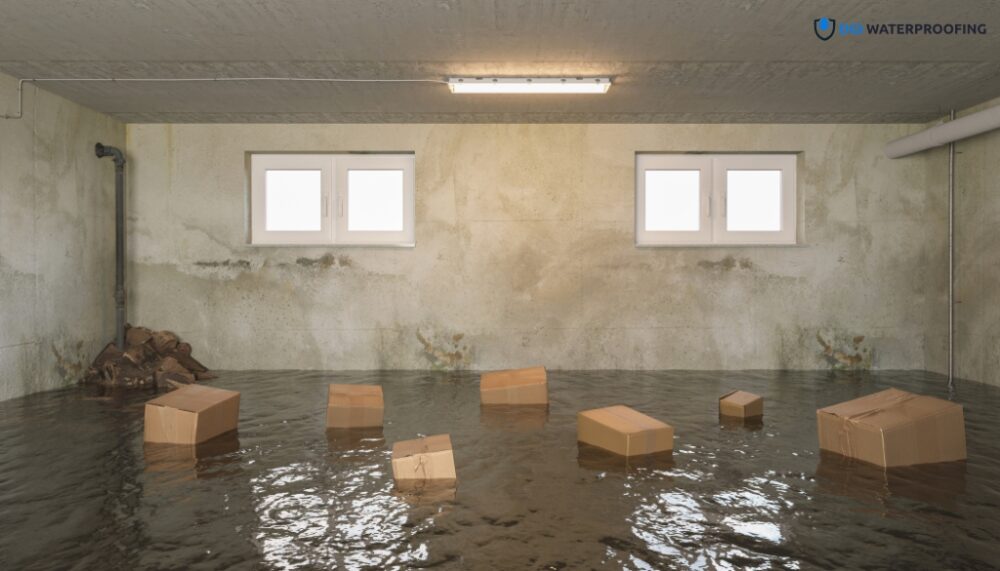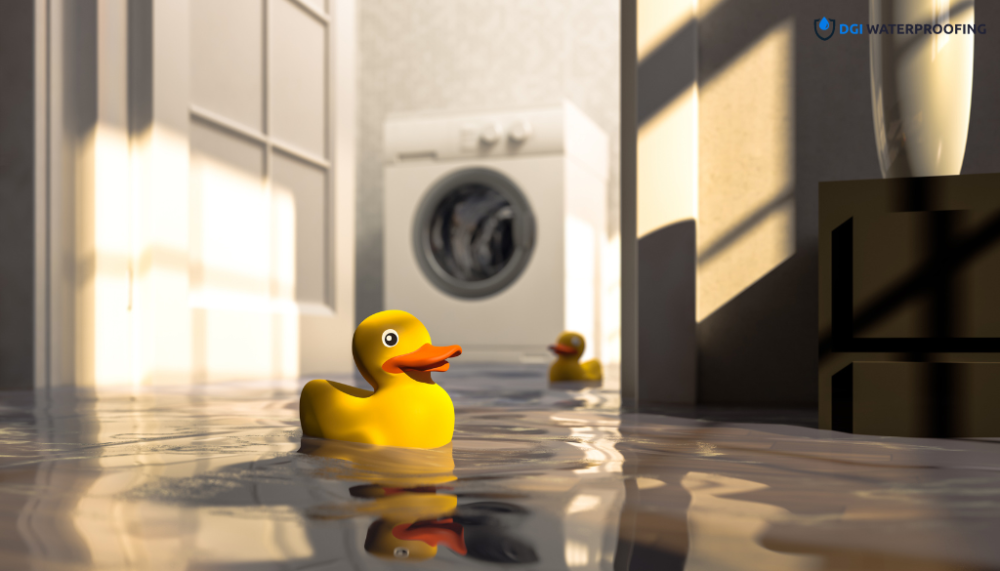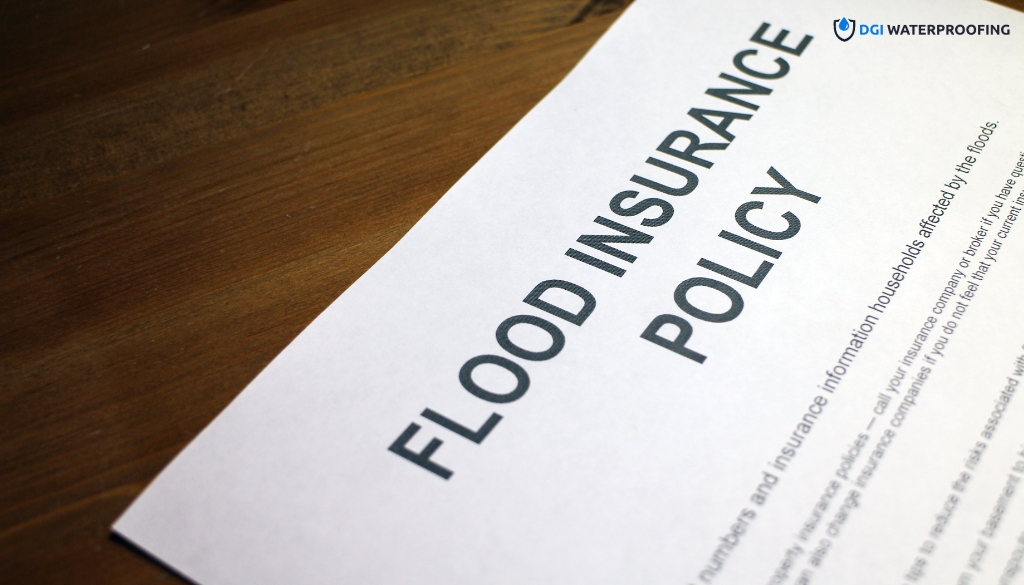As Canadian homeowners, it’s essential to be aware of the risks of floods damaging your property. With unpredictable weather patterns and the increasing frequency of extreme weather events, having flood insurance coverage is crucial. This coverage can provide financial assistance to repair and rebuild your home in the event of flood damage.
In this section, we will discuss the fundamental aspects of flood insurance in Canada. We will explore the policies available, the coverage they offer, and the requirements for obtaining flood insurance. By the end of this section, you’ll be better equipped to make informed decisions regarding flood insurance for your home.
Understanding Flood Risks and Assessments in Canada
Before you can adequately protect your home from flood damage, it’s essential to understand the specific risks in your area. Flood risks vary by location, and flood risk assessments are conducted to determine the likelihood of floods occurring in specific regions.
Factors such as rainfall, snowmelt, soil conditions, and proximity to water sources all play a role in determining flood risks. In Canada, flood risk assessments are conducted by engineers, hydrologists, and other experts to identify the areas that are most vulnerable to flooding.
The Importance of Flood Risk Assessments
Understanding the flood risks in your area is crucial for identifying the appropriate flood insurance coverage and requirements for your home. Flood insurance policies typically provide coverage for damages caused by flash floods, overflowing rivers, and other water-related events. However, the extent of coverage provided can vary depending on the flood risk level in your area.
By conducting a flood risk assessment, you can determine the likelihood of flooding in your neighborhood and choose the appropriate flood insurance coverage. For example, if your home is located in a high-risk flood zone, you may need to purchase additional coverage to protect your property fully.
The Role of Flood Insurance Coverage
Flood insurance coverage is an essential aspect of protecting your home from water-related damages. It provides financial assistance in repairing and rebuilding your property after flood damage. Without adequate flood insurance coverage, homeowners may have to bear the significant costs of repairs and may not be able to afford to rebuild their homes.
In Canada, there are two types of flood insurance policies available: comprehensive flood insurance policies and standalone flood insurance policies. Comprehensive policies provide coverage for all types of floods, while standalone policies cover damages caused by specific types of floods, such as flash floods.
Flood Insurance Requirements
It’s important to note that flood insurance requirements can vary depending on several factors. Insurance providers may have different requirements depending on the location of your home, the flood risk level, and the coverage options you choose.
In Canada, flood insurance is not always mandated by law, but it may be required by mortgage lenders. If you live in a high-risk flood zone, your mortgage lender may require you to purchase flood insurance as a condition of the loan.
Ultimately, understanding flood risks and assessments in Canada is crucial for protecting your home from water-related damages. By choosing the appropriate flood insurance coverage and meeting the necessary requirements, you can ensure that your property is adequately protected from the financial burdens of flood damage.

Types of Flood Insurance Policies Available
When it comes to protecting your home against flood damage, there are different types of flood insurance policies available in Canada. Each type of policy provides specific coverage, and it’s essential to understand the differences between them to make an informed decision.
Comprehensive Flood Insurance Policies
A comprehensive flood insurance policy is a type of insurance that covers both building and contents in case of flood damage to your home. This policy provides coverage for the cost of repairing or rebuilding your home and its structure, as well as the replacement or repair of damaged personal property, such as furniture, appliances, and electronics.
A comprehensive flood insurance policy is suitable for homeowners living in high-risk flood zones or those who want full protection against flood damage. The policy covers damages caused by all types of flooding, including overland flooding, sewer backup, or coastal flooding.
Standalone Flood Insurance Policies
A standalone flood insurance policy is designed to cover only the building structure of your home in case of flood damage. This policy is suitable for homeowners who want basic coverage against flood damage, but not coverage for personal property.
Standalone flood insurance policies don’t cover damages caused by sewer backup or overland flooding, and the policy limits may be lower than those of comprehensive flood insurance policies.
The Claims Process for Flood Insurance Policies
If you have flood insurance coverage and your home is damaged due to a flood, you can file a flood insurance claim to receive compensation for your losses.
The claims process for flood insurance policies involves the following steps:
- Contacting your insurance company as soon as possible after the flood to report the damage
- Providing your insurance company with documentation of the damages, including photos and videos
- Working with an insurance adjuster to evaluate the extent of the damages and the cost of repairs or replacements
- Receiving compensation from your insurance company to cover the cost of repairs, rebuilding, or replacement of damaged property
It’s important to note that flood insurance policies have specific exclusions and limitations. Reviewing your policy carefully and understanding its coverage and limitations is crucial to ensuring that your home is adequately protected against flood damage.
How Flood Insurance Protects Your Home
When it comes to protecting your home from water-related damages, flood insurance coverage is essential. Floods can cause severe damage that can be expensive to repair. Without flood insurance, homeowners could face financial ruin if their property is damaged in a flood.
Flood damage protection is provided through different types of insurance policies, including comprehensive flood insurance policies and standalone flood insurance policies, which provide coverage against specific types of water damage.
The Coverage Provided by Flood Insurance Policies
Flood insurance policies provide coverage for several types of damages caused by flooding. The coverage includes:
- Structural damage to the home and its foundation
- Damage to the electrical, plumbing, and HVAC systems
- Damage to personal property such as furniture, clothing, and electronics
- Expenses related to temporary housing while your home is being repaired or rebuilt
It is important to note that not all types of flood damage are covered under a standard flood insurance policy. For example, damages caused by water backup from sewers or drains are typically not covered.
Financial Assistance in Repairing and Rebuilding Your Property
If your home is damaged in a flood, flood insurance coverage can provide the necessary financial assistance to repair or rebuild your property. Without this coverage, homeowners may have to pay for the damages out of their own pockets, which can be costly and overwhelming.
Flood insurance policies typically have a deductible that must be paid before the coverage kicks in. The amount of the deductible can vary depending on the policy. It is important to review the policy details carefully to understand the amount of the deductible and the coverage provided.
Protect Your Home with Flood Insurance
Homeowners who live in areas prone to floods should consider flood insurance coverage to protect their homes. Even homeowners who live in areas with low flood risk should consider obtaining flood insurance coverage as floods can happen anywhere. Flood insurance can provide financial protection and peace of mind, knowing that your home is covered in case of a flood.

Factors Affecting Flood Insurance Rates in Canada
Before purchasing flood insurance coverage, it’s important to understand the factors that can affect your rates. Here are some key considerations to keep in mind:
Location of Your Property
The location of your property is one of the most significant factors that can affect your flood insurance rates. Properties located in high-risk areas, such as flood plains or areas prone to heavy rainfall, are likely to have higher rates than properties in low-risk areas.
According to a study by the Insurance Bureau of Canada, approximately 20% of Canadian households are at risk of flood damage. If your property is located in a high-risk area, it’s important to consider purchasing adequate flood insurance coverage to protect your home.
Flood Risk Level
The flood risk level is another crucial factor that can affect your flood insurance rates. Insurance providers will assess the risk level of your property based on a variety of factors, including the age of the property, the type of foundation, and the elevation of the property.
If your property is determined to have a high flood risk level, you can expect to pay higher rates for flood insurance coverage. However, purchasing comprehensive coverage can provide you with the financial protection you need in the event of flood damage.
Coverage Options You Choose
The flood insurance coverage options you choose can also affect your rates. Comprehensive coverage will typically have higher rates than standalone policies that only cover specific types of flood damage.
It’s important to consider your specific needs when choosing flood insurance coverage. Do you live in a high-risk area? Do you have a basement that could be vulnerable to flooding? Taking these factors into account can help you make informed decisions about the level of coverage you need.
By understanding the factors that can affect your flood insurance rates, you can make informed decisions about protecting your home. While rates may vary based on location, risk level, and coverage options, purchasing adequate flood insurance coverage is crucial to safeguarding your property from water-related damages.
Meeting Flood Insurance Requirements in Canada
Flood insurance is a critical step in protecting your home from water-related damages. However, not all homes are eligible for flood insurance coverage. To obtain the right coverage for your property, you must meet specific flood insurance requirements in Canada.
Flood Zone Determination
The first step in meeting flood insurance requirements is to determine the flood zone your property is located in. Insurance providers use flood zone maps created by the government to assess the flood risk level of a property.
These maps take into account various factors such as local rainfall, topography, and proximity to water bodies. Based on this information, properties are assigned a flood risk rating, which determines the level of flood insurance coverage required.
Building Requirements
Once you have determined the flood risk rating of your property, the next step is to ensure that it meets building requirements set by the government and insurance providers.
These requirements include elevating the property above the flood level, installing flood vents, and using flood-resistant materials when building or renovating your home.
Insurance Provider Standards
Each insurance provider has its own set of standards and requirements for providing flood insurance coverage. These standards may vary depending on the location and flood risk level of your property.
It is essential to research and compare different insurance providers’ flood insurance policies to find the one that meets your specific requirements and offers the right level of coverage for your home.
Meeting flood insurance requirements is crucial to ensure that your home is fully protected from flood-related damages. Take the necessary steps to assess your property’s flood risk level, meet building requirements, and research various insurance providers’ policies to find the right flood insurance coverage for your home.
